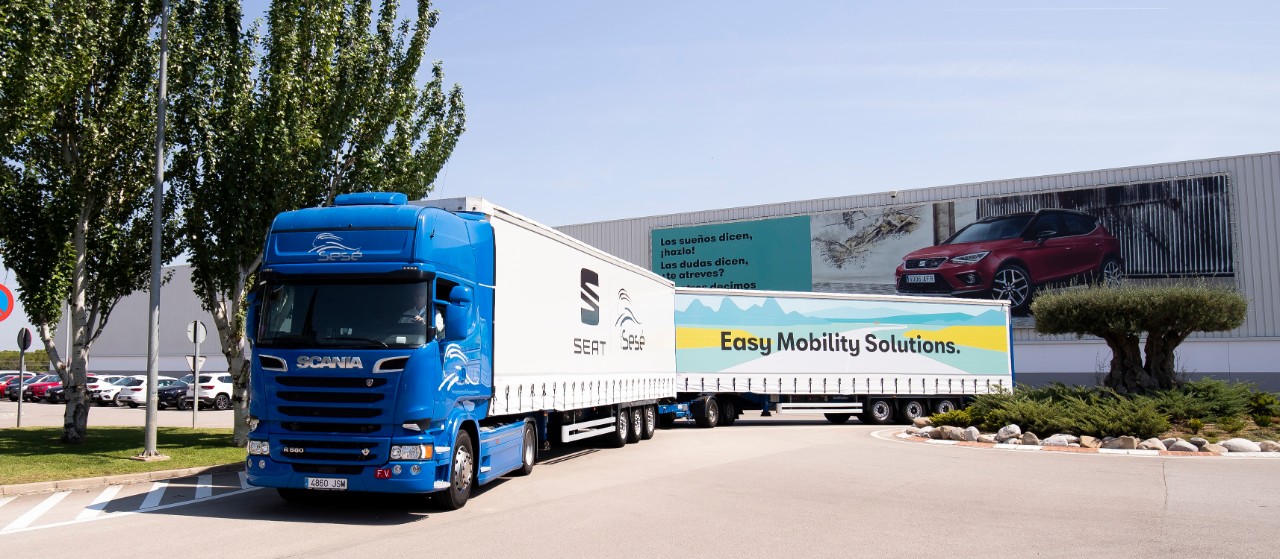
Testing twin trailers for environmental gains
10 JUNE 2019
Spanish car manufacturer SEAT and its logistics partner Grupo Sesé have teamed up to assess the advantages of operating 31.7-metre-long tractor and trailer combinations.
The tests, which are taking place between Zaragoza and SEAT’s factory near Barcelona, see a Scania R 580 tractor unit pulling two 13.6-metre trailers, thus increasing the payload to 70 tonnes. The SEAT and the haulage company will evaluate performance and the benefits in reducing emissions, increasing efficiency and enhancing road safety. SEAT hopes that the tractor-trailer combination to reduce carbon emissions by 20 percent and logistics costs by 25 percent.
Potentially enormous advantages
“This has the capacity to reduce the number of trucks circulating by half and that gives enormous advantages in terms of sustainability, environment, safety and efficiency,” says Dr Christian Vollmer, Vice President for Production and Logistics at SEAT.
Additionally, the twin trailers are well suited for use in intermodal transport solutions, since freight trains are designed to operate at maximum performance with trailers of 13.6 metres.
The 31.7-metre tests continue SEAT and Grupo Sesé’s track record of introducing long tractor and trailer combinations to Spain. It’s just two years since the duo started using 25.5-metre long tractor and trailer combinations in the country, until now the longest vehicles driving on Spanish roads.
Scania’s pioneering example
The Scania Transport Laboratory – which carries out transport assignments between Scania’s production plants – pioneered 31.7-metre tractor and trailer operations in 2015. Each day, two extra-long trucks travel nearly 600 kilometres from the company’s main production plant in Södertälje to Malmö en route to Scania’s plant in the Netherlands.
“The concept works very well and is beneficial for both the environment and the traffic situation,” reports Managing Director Jan Björklund, Scania Transport Laboratory. “With a payload of approximately 73 tonnes, we save 25 percent in fuel costs with the same percentage reduction in CO2 emissions.”